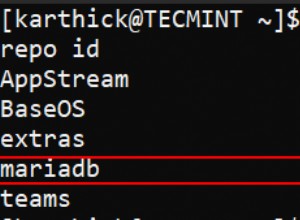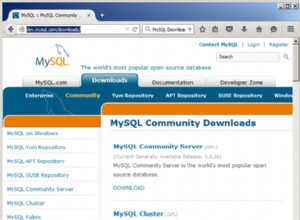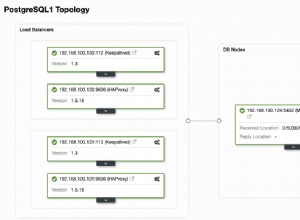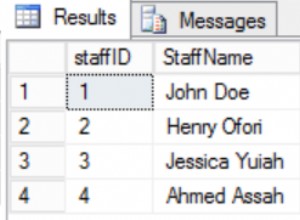J'ai passé du temps et j'ai finalement trouvé une solution de travail.
Je le publierai ici pour référence future.
Solution
Tout d'abord, vous avez trois tables (foo_table , bar_table , baz_table ) qui pointent vers vos users table au moyen de clés étrangères (appelées user_id dans tous les cas). Vous devrez remplacer les identifiants stockés dans ces colonnes à partir de id à another_id . Voici comment procéder :
-- We are dropping the foreign key constraint on dependant table (in other case it will prevent us from updating the values)
ALTER TABLE foo_table DROP CONSTRAINT fk_e52ffdeea76ed395;
-- Then, we're swapping values in foreign key column from id to another_id
UPDATE foo_table T SET user_id = (SELECT another_id FROM users WHERE id = T.user_id);
-- And finally we're creating new foreign key constraint pointing to the another_id instead of id
ALTER TABLE foo_table ADD CONSTRAINT fk_e52ffdeea76ed395 FOREIGN KEY (user_id) REFERENCES users (another_id) ON DELETE CASCADE;
Vous devrez répéter les requêtes ci-dessus pour chaque table dépendante.
Après cela, toutes les tables dépendantes pointeront vers votre nouveau another_id colonne.
Au final il nous suffira de remplacer la clé primaire :
-- 1. Dropping the original primary key
ALTER TABLE users DROP CONSTRAINT users_pkey
-- 2. Renaming existing index for another_id (optional)
ALTER INDEX uniq_1483a5e93414710b RENAME TO users_pkey
-- 3. Creating new primary key using existing index for another_id
ALTER TABLE users ADD PRIMARY KEY USING INDEX users_pkey
-- 4. Creating index for old id column (optional)
CREATE UNIQUE INDEX users_id ON users (id)
-- 5. You can drop the original sequence generator if you won't need it
DROP SEQUENCE users_id_seq
Vous pouvez même supprimer l'id d'origine colonne si vous le souhaitez.
J'espère que cela aidera quelqu'un.




